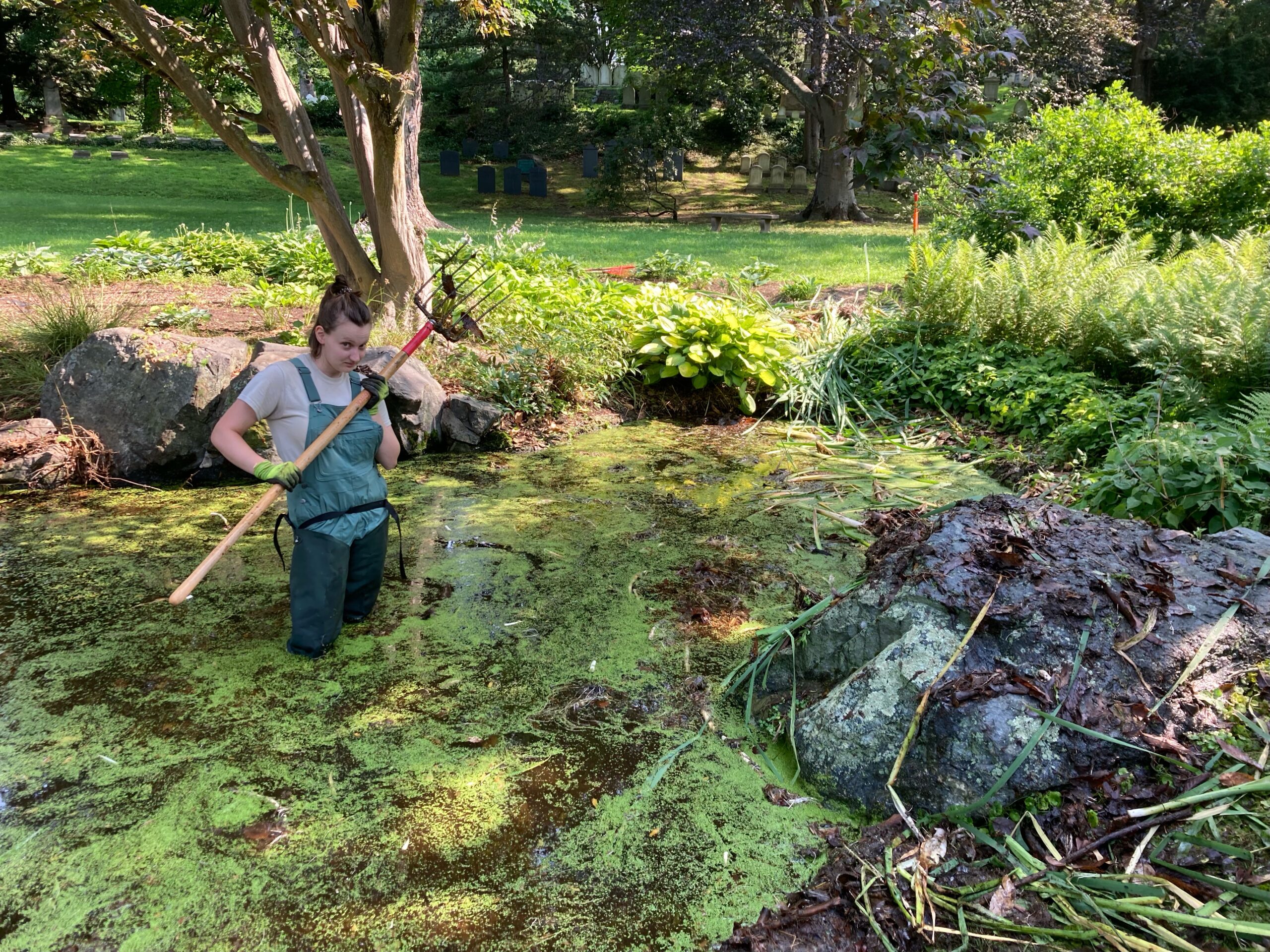
On the first day of her summer internship, Cyd Abnet ’24 was trying to find the restroom. Still unfamiliar with her surroundings, she opened a door, stepped inside a room, and was suddenly enveloped in darkness.
“I turned on my flashlight, and it shined on a marble bust,” the environmental science major recalls. “I thought, ‘This is such a silly entrance to the bathroom.’ But it was not, at all, the entrance to the bathroom. I had wandered into a crypt.”
Stumbling into a crypt sounds like an Indiana Jones-esque nightmare to most people. For Abnet, it was just another day working on landscape design at Mount Auburn Cemetery in Cambridge, Massachusetts. Abnet, who is passionate about sustainability and botany, found that her internship among the centuries-old graves personified her research interests while allowing her to work at the oldest landscaped cemetery in the country.
“At cemeteries, you celebrate life with plants and rich horticulture, and also recognize that life ends in death,” she says. “This one place represents a full circle, from birth to the end of whatever journey you’re on.”

After spending months at the cemetery, Abnet saw an easy connection between resting places and equity. Historically, socioeconomic status and race limited who could be buried in a cemetery and who was allowed to visit. In modern times, access to burial grounds remains limited. One’s economic class can determine whether they’ll rest at a public or private cemetery.
At the cemetery, families can pay for annual care or perpetual care, known as ACPC. Annual care is when families pay annually for grave upkeep, while perpetual care is when families pay once for everlasting maintenance. The ability to pay for these different care options is largely a class issue; graves of people who cannot afford upkeep may sink into disrepair.
“Perpetual care is interesting,” Abnet says, “because families paid $50 in the mid-1800s and we have to take care of that grave for perpetuity.”
Abnet never felt scared amid the crypts — or among ghosts. She describes her biggest fear as the “wrath of climate change,” which has consumed her thoughts since age 10. Working at the cemetery could have put her focus on the “end times,” but instead inspired her to use her passion to make a positive impact on the world. At Mount Auburn Cemetery, Abnet’s primary task was to create intentional floral designs and grow greenery like dainty bonsai trees to put on graves. This work was sustainable because Abnet and the cemetery limited the use of colored mulch and preserved local honeybee hives. She considered how to preserve areas of the cemetery in the event of erosion.
“I was able to think about problem-solving in real-time,” Abnet says.
Balancing what looks good with what’s good for the environment is at the heart of Abnet’s passion for landscape design. She’s cautiously optimistic that sustainability practices can make the planet more livable, while also providing room for her career to blossom.
“I developed organizational, teamwork, and general land-maintenance skills at the cemetery that will definitely transfer to any career I choose,” she says. “I think this internship helped me to see that there are more possibilities for sustainable, equitable jobs in the field.”
